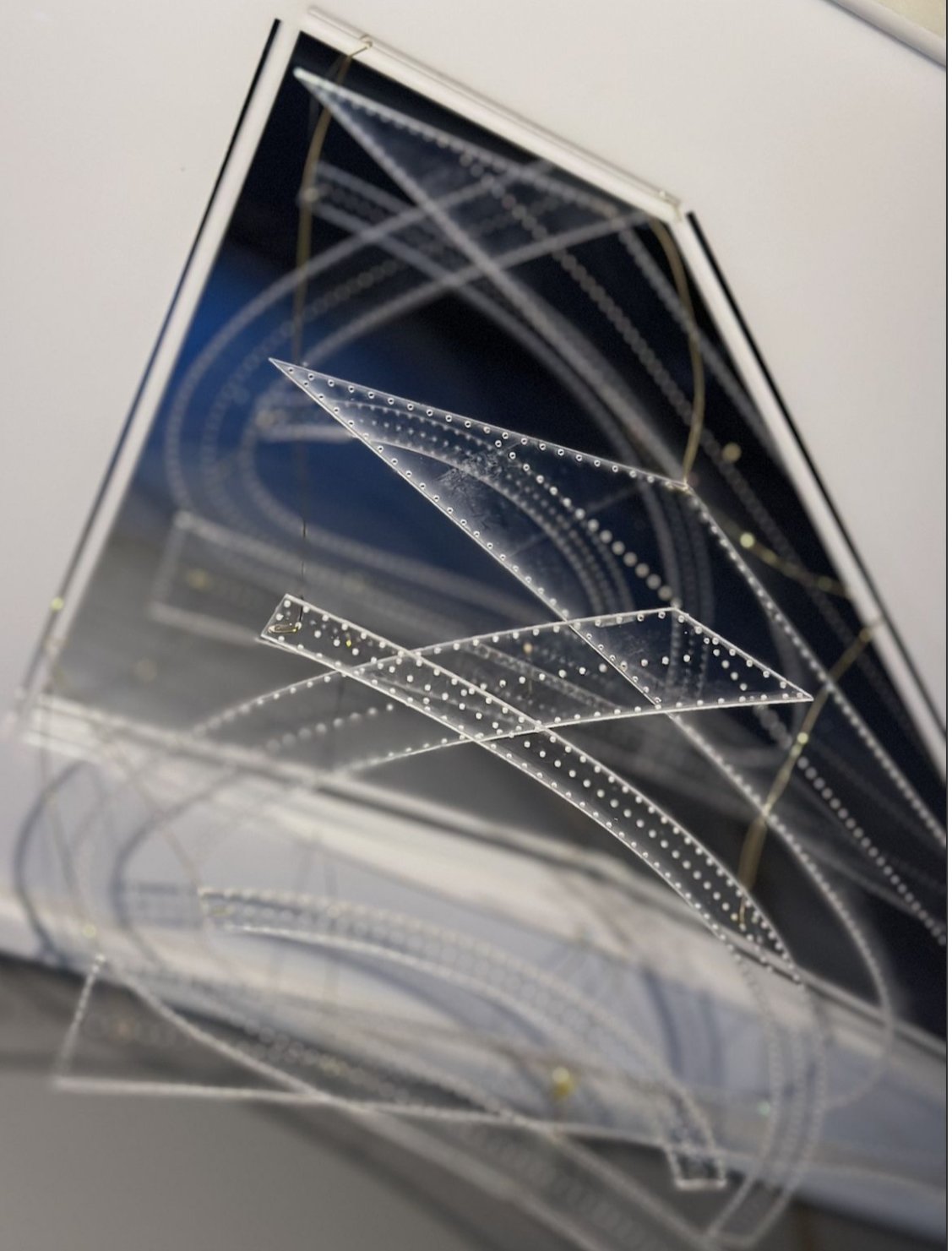Feature by Anushka Pai
Photos by Arden Sklar






Cate Mok is a Senior at Barnard studying architecture and computer science. Though Mok's art primarily centers around her academic fields, she enjoys working with diverse mediums, often blending her design skills with her interests in performance, creative writing, and technology.
We met at the School of Journalism on a rainy afternoon, a fitting location for our discussion. Mok explained that she had previously taken a course at the school, wanting to improve her interview skills. This is a common practice for Mok, who seems to have an endless capacity for new knowledge. I wasn't surprised to learn about Mok's vast intellectual pursuits, as they are reflected clearly in her creative work, which weaves design, technology, and philosophy together with precision.
Mok arrived at Barnard with plans to pursue creative writing. However, it wasn't long before she fell in love with architecture, drawn to the opportunity to construct physical spaces and explore how design interacts with the human experience. She simultaneously grew interested in computer science, viewing the digital world as another space to be built and felt.
"We increasingly live and build in a digital world using digital infrastructure. As technology has developed, the digital world has gained a physical footprint, interacting with us and the environment," stated Mok.
In one of her many explorations of the digital and physical world, Mok used data centers to study how digital actions all have a physical location. Her project, Cloudland, explores how data centers can be redesigned to adapt to changing advancements in data and energy storage. Most data centers, like those built near Mok's hometown, Washington D.C., use large plots of land and rely on high intakes of energy. Interestingly, these expansive spaces are not built for human circulation, hosting less than 20 people daily. However, despite being physically inaccessible, data centers can be easily accessed digitally. Whether through an email or a simple Google search, our digital activity finds its physical location at a data center. In conceptualizing how data centers can be modified, Mok investigated one of her central curiosities: how interactions between people, the physical world, and the digital plane are multidirectional, all inevitably finding ways to influence one another.
"In this project, I spent a lot of time arguing that traditionally, we see architecture as a means of providing shelter and creative expression. But I also think there's a huge aspect [of architecture] that involves the communication and organization of information. So I started looking at cave paintings, libraries, churches– all these ways to express and store information like we do digitally," said Mok.
Following a deep dive into the archival photography books in Avery Library, Mok found herself fascinated by the platonic ideal of an American diner: modest and non-threatening, a place you can go to disappear. Her project, the Heartbreak Diner, offers its customers an opportunity to seek closure through one last conversation with their loved ones. It is a space to grieve, reminisce, and vent, designed to be entered through virtual reality. The diner acts as a digital recreation of the physical world, a way to encourage intimate connection despite the barriers of distance and time.
"No one can see your reaction, and as soon as the experience is over, you can still be in your place of comfort. It gets to a theme in my work, creating a space for conversations that can not or do not happen in real life," stated Mok.


Self-described as being in the 'let's not build any more buildings' phase, Mok believes architecture is most impactful when designed intentionally. She views architectural modeling through the same lens. Remaining conscious of the materials used and waste generated as an architecture student, Mok emphasized that 'intentional modeling' offers an opportunity to think critically about social impact and pursue unconventional constructions, such as edible, hanging, and compostable designs. Her models push the boundaries of how spaces can be represented, while still remaining tethered to the issues she is passionate about.


Curious about what computer science research would look like without a computer, Mok constructed a mini 'pop-up cafe' where she could facilitate conversations between passersby. While reenvisioning the act of computation, this project also studied the role of space in fueling conversation. Equipped with a large roll of paper and a makeshift cafe set-up, Mok presented Love, Death, and Robots at the undergraduate CS research conference. The faculty, students, and researchers who approached her table were given a 'menu,' prompting them to answer a question asked by the previous visitor. While answering the question and raising one of their own, Mok took notes, ending the night with 4 hours' worth of ideas about love, grief, and life.
"I consider love to be constructed from public discourse and moments of connection between strangers. The dining experience was used as an interface for meaningful connection, and conversation as an act of collaborative computation," said Mok.
Mok's latest project, The Mourning Room, is an immersive experience exploring how love and grief are spatialized, using generative and haptic technologies. The event will debut in Barnard's Movement Lab in the coming week, and programming will include a research presentation, audience demo, and open installation.
“I wanted to create a space for people to consider how we might design spaces and choreographies to miss someone and sustain the physical memory and presence of them. I also wanted to ask, how can hybrid technologies prototype and facilitate architectural and digital circuitries for love, grief, and the online and physical worlds built by two people,” stated Mok.






























